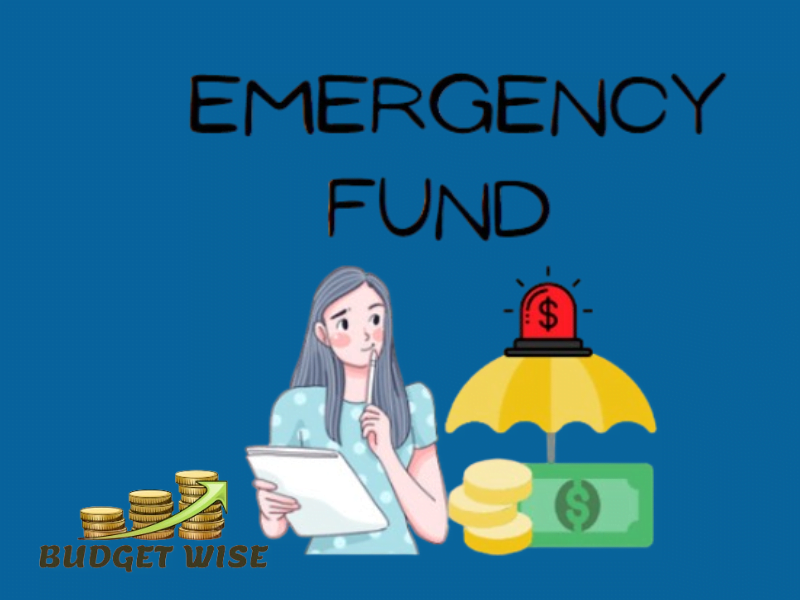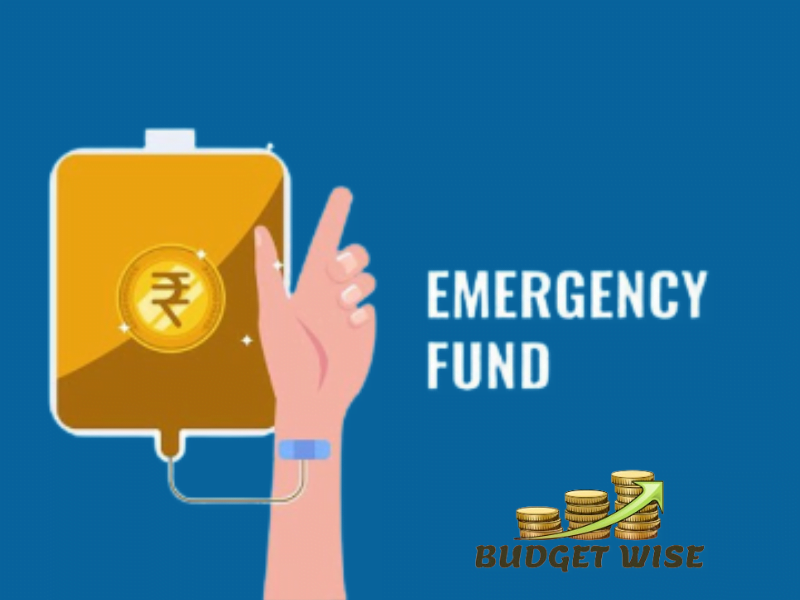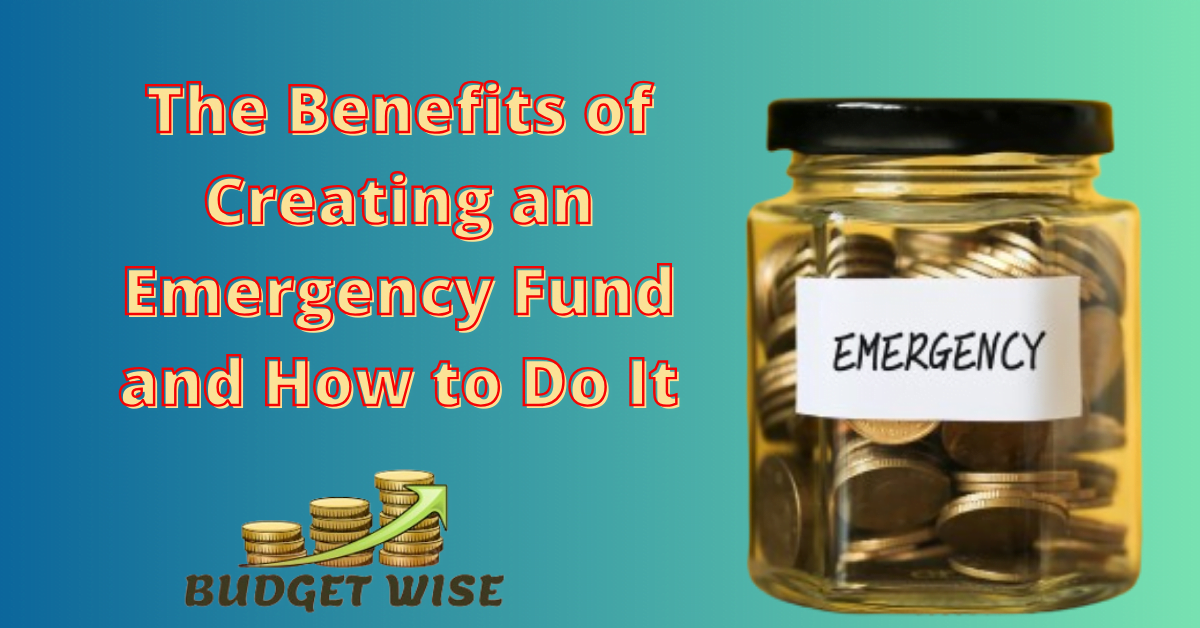The Benefits of Creating an Emergency Fund and How to Do It
In today’s unpredictable world, having a financial safety net is more important than ever. I have experienced firsthand the peace of mind that comes with having an emergency fund. Not only does it provide security in times of crisis, but it also helps to keep me on track with my budget-wise financial goals. In this article, I’ll dive into the numerous benefits of an emergency fund and offer practical steps to create one effectively.
Why an Emergency Fund is Essential

Financial Security
One of the primary benefits of an emergency fund is the sense of financial security it provides. Life is full of surprises, and not all of them are pleasant. Whether it’s an unexpected medical bill, a car repair, or a sudden job loss, having money set aside can prevent these surprises from turning into full-blown financial disasters.
Avoiding Debt
Without an emergency fund, many people resort to credit cards or loans when faced with unexpected expenses. This can quickly lead to a cycle of debt that is hard to break. By saving in advance, I can avoid high-interest debt and maintain my budget-wise approach to finances.
Stress Reduction
Money problems are one of the leading causes of stress. Knowing that I have a cushion to fall back on during tough times significantly reduces my stress levels. An emergency fund allows me to focus on solving the problem at hand rather than worrying about how I’ll pay for it.
Flexibility and Freedom
Having an emergency fund gives me the flexibility to make choices that are best for my long-term well-being. For example, if I am unhappy in my job, knowing I have a financial buffer allows me to search for a better opportunity without the pressure of immediate financial need. This kind of budget-wise planning opens up more possibilities for a fulfilling life.
How to Create an Emergency Fund
Creating an emergency fund is a crucial step in achieving financial stability and security. It might seem daunting at first, but with a clear plan and consistent effort, it’s entirely possible. Here’s a detailed guide on how to build an emergency fund that will keep you financially secure.
Assess Your Needs
Calculate Your Monthly Expenses
The first step in creating an emergency fund is determining how much you need to save. Start by calculating your monthly expenses. Include rent or mortgage payments, utilities, groceries, transportation, insurance, and any other necessary expenses. Don’t forget to account for occasional costs like medical bills, maintenance, and personal care.
Set a Savings Goal
A general rule of thumb is to have three to six months’ worth of living expenses saved in your emergency fund. For instance, if your monthly expenses are $3,000, you should aim to save between $9,000 and $18,000. This range provides a buffer that can cover you during job losses, medical emergencies, or other unexpected situations. Tailor this goal to your personal circumstances, such as job stability and family needs, to be truly budget-wise.
Start Small and Build Consistently
Begin with a Small Goal
Building an emergency fund from scratch can be overwhelming. Start with a smaller, more achievable goal, like saving $500 or $1,000. This initial amount can cover minor emergencies and give you a sense of accomplishment. Once you reach this milestone, you can set larger goals and continue to build your fund.
Automate Your Savings
One of the easiest ways to save consistently is by setting up automatic transfers from your checking account to your savings account. Decide on an amount you can comfortably save each month, even if it’s just $25 or $50. Automating your savings ensures that you’re consistently contributing to your emergency fund without having to remember to transfer the money yourself.
Cut Unnecessary Expenses
Review Your Spending
To find extra money to put into your emergency fund, review your current spending habits. Look at your bank statements and categorize your expenses. Identify areas where you can cut back. This might include dining out less frequently, canceling unused subscriptions, or finding cheaper alternatives for entertainment.
Create a Budget
Creating a budget is a key part of being budget-wise and can help you identify how much you can realistically save each month. List all your sources of income and all your expenses. Allocate funds for your needs and some for your wants, but prioritize your savings. Stick to this budget and make adjustments as necessary to ensure you’re consistently contributing to your emergency fund.
Increase Your Income
Take on Extra Work
If possible, consider taking on additional work to boost your income. This might include freelance work, part-time jobs, or side gigs. Even small amounts earned from these extra efforts can significantly contribute to your emergency fund over time.
Sell Unneeded Items
Look around your home for items you no longer use or need. Selling these items can provide a quick boost to your emergency fund. Online platforms like eBay, Craigslist, or local Facebook Marketplace groups are great places to sell unwanted goods.
Keep Your Emergency Fund Separate

Open a Dedicated Savings Account
To avoid the temptation of using your emergency fund for non-emergencies, keep it in a separate savings account. Look for accounts that offer good interest rates and easy access when you need it. This separation helps maintain discipline and ensures that the funds are readily available during true emergencies.
Consider High-Yield Accounts
If you’re looking to grow your emergency fund faster, consider putting your savings in a high-yield savings account or a money market account. These accounts typically offer higher interest rates than standard savings accounts, helping your money grow more quickly while still being accessible.
Regularly Reevaluate Your Fund
Periodic Review
Life circumstances and expenses can change, so it’s important to regularly reevaluate your emergency fund. Make it a point to review your savings goal and monthly expenses at least once a year. This practice ensures that your emergency fund remains adequate and aligns with your current financial situation.
Adjust Your Contributions
As your income changes, adjust your contributions to your emergency fund accordingly. If you receive a raise or bonus, consider allocating a portion of it to your savings. Conversely, if you experience a decrease in income, you might need to temporarily reduce your savings contributions while maintaining a budget-wise approach.
Tips for Staying Motivated
Set Milestones
Breaking your savings goal into smaller milestones can make the process more manageable and less overwhelming. Celebrate each milestone you achieve, no matter how small. These celebrations can provide a sense of accomplishment and keep you motivated to continue saving.
Visualize Your Progress
Use visual aids like charts or graphs to track your progress. Seeing your emergency fund grow over time can be incredibly motivating. There are many apps and online tools available that can help you visualize your savings and keep you on track.
Remind Yourself of the Benefits
Regularly remind yourself of the peace of mind and security an emergency fund brings. Think about how it protects you from financial stress and provides flexibility in your life choices. Keeping these benefits in mind can help you stay committed to your savings plan.
Balancing Debt and Savings
Prioritize High-Interest Debt
If you have high-interest debt, it’s essential to balance debt repayment with saving for an emergency fund. High-interest debt can quickly spiral out of control, so focus on paying it down while setting aside a smaller amount for emergencies. Once the high-interest debt is under control, you can shift more focus to building your emergency fund.
Create a Combined Plan
Develop a plan that allows you to tackle both debt and savings simultaneously. Allocate a portion of your monthly budget to debt repayment and another portion to your emergency fund. This balanced approach ensures that you’re making progress on both fronts and maintaining a budget-wise strategy.
The Long-Term Benefits of an Emergency Fund
Financial Stability
Having an emergency fund provides a solid foundation for financial stability. It ensures that unexpected expenses don’t derail your long-term financial plans and helps you stay on track with your budget-wise goals.
Freedom to Take Risks
With an emergency fund in place, you have the freedom to take calculated risks in your career or personal life. Whether it’s starting a new business, switching careers, or making a significant life change, knowing you have a financial safety net gives you the confidence to pursue opportunities without fear of immediate financial repercussions.
Generational Impact
Building an emergency fund sets a positive example for future generations. By demonstrating the importance of saving and being budget-wise, you can instill these values in your children and help them develop healthy financial habits. This can lead to greater financial security and stability for your family in the future.
In Summary .
Creating an emergency fund is one of the most impactful steps you can take towards achieving financial peace of mind and stability. By assessing your needs, starting small, cutting unnecessary expenses, increasing your income, and regularly reevaluating your fund, you can build a robust financial safety net. Remember, being budget-wise involves consistent effort and discipline, but the rewards are well worth it. Start today, and give yourself the financial security and freedom you deserve.
The Psychological Benefits of an Emergency Fund
Peace of Mind
Knowing that I have an emergency fund brings me immense peace of mind. I no longer lie awake at night worrying about what I would do in the event of an emergency. This sense of security allows me to focus on my long-term goals without constantly being derailed by financial concerns.
Confidence in Decision Making
Having an emergency fund boosts my confidence in making life decisions. Whether it’s switching careers, starting a new business, or making a major purchase, knowing that I have a financial cushion gives me the freedom to take calculated risks. This budget-wise approach has empowered me to pursue opportunities that I might otherwise have been too afraid to consider.
Financial Discipline
Building and maintaining an emergency fund has taught me valuable lessons in financial discipline. I’ve become more mindful of my spending habits and more committed to saving. This discipline extends to other areas of my finances, helping me stay on track with my budget-wise goals and achieve greater financial stability overall.
Common Questions About Emergency Funds
How Much Should I Save?
As mentioned earlier, a good starting point is three to six months’ worth of living expenses. However, the exact amount can vary depending on individual circumstances. For instance, if you have a stable job with a reliable income, you might feel comfortable with three months’ worth of expenses. On the other hand, if your job is less secure or if you have dependents, aiming for six months or more might be wiser.
Where Should I Keep My Emergency Fund?
It’s crucial to keep your emergency fund in a place where it’s easily accessible but also earns some interest. High-yield savings accounts, money market accounts, or short-term certificates of deposit (CDs) are good options. Avoid investments with high risk or those that lock up your money for extended periods.
How Can I Stay Motivated to Save?
Staying motivated to save can be challenging, especially when the goal seems far off. I found that setting smaller, incremental goals helped keep me on track. Celebrating these milestones, no matter how small, provided the motivation I needed to continue. Additionally, reminding myself of the peace of mind and security an emergency fund brings kept me focused on my budget-wise path.
What If I Have Debt?
If you have high-interest debt, it might make sense to balance debt repayment with saving for an emergency fund. Focus on paying down the debt while setting aside a smaller amount for emergencies. Once the high-interest debt is under control, you can shift more focus to building your emergency fund.
Can I Use My Emergency Fund for Non-Emergencies?
It’s important to resist the temptation to dip into your emergency fund for non-emergencies. This fund should only be used for unexpected expenses that are necessary and urgent. Keeping it separate from other savings can help maintain this discipline. Remember, being budget-wise means prioritizing long-term financial security over short-term desires.
The Long-Term Impact of an Emergency Fund
Financial Resilience
One of the most significant long-term benefits of an emergency fund is increased financial resilience. I am better prepared to handle life’s ups and downs without derailing my financial plans. This resilience not only protects my current financial health but also supports my future financial goals.
Improved Credit Score
By avoiding high-interest debt in times of crisis, my emergency fund helps me maintain a healthy credit score. This, in turn, makes it easier to qualify for loans and credit at favorable rates when needed. Being budget-wise in the short term pays off significantly in the long run.
Generational Impact
The habits and discipline I develop while building an emergency fund can have a positive impact on future generations. By setting a good example and teaching my children about the importance of saving and being budget-wise, I can help them develop their own healthy financial habits. This generational impact can lead to greater financial stability and security for my family in the future.
Conclusion
Creating an emergency fund is one of the most important steps I have taken towards achieving financial security and peace of mind. By being budget-wise and disciplined in my savings efforts, I have built a cushion that protects me from life’s unexpected challenges. Whether you’re just starting out or looking to improve your current financial situation, I encourage you to prioritize an emergency fund. The benefits are far-reaching and can profoundly impact your overall financial well-being.
Remember, it’s not about how much you start with, but about making consistent efforts to save. By assessing your needs, starting small, cutting unnecessary expenses, and regularly reevaluating your progress, you can build an emergency fund that provides the security and freedom you deserve.
